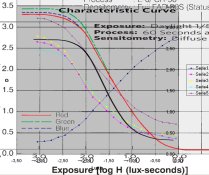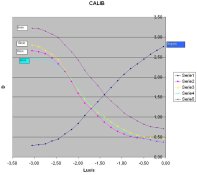At home, when you use a silver solvent to clear highlights (and obtain a good DMin) you also decrease your DMax potential, as the silver you disolve won't generate density.
With a powerful first developer, how much density is the "unused" halide going to form after second development? If your highlights are off the target (which is 0.3D + base + fog) by, say, more than 0.2D, then the first developer needs a relook. So the hit that DMax takes, for a good first developer, is probably 0.2D or smaller. Is it really a big concern assuming you already are getting good enough density?
Last edited:






